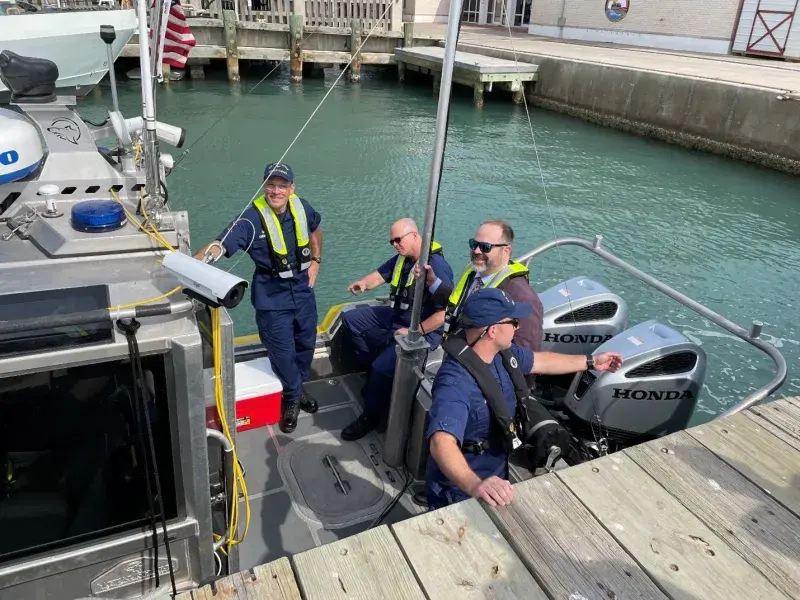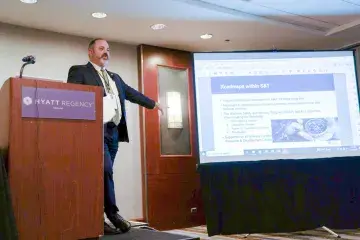
The Science and Technology Directorate’s (S&T) 10-year plan addresses current and future DHS waterway and border safety efforts, along with related budget needs.
The United States, a maritime nation surrounded by 95,000 miles of shoreline, faces unique and evolving threats to its maritime space. Whether due to changes in economics, geopolitics, society, demography, or other factors, protecting U.S. waterways, ports of entry, and coastline borders can be challenging.
S&T’s Maritime Safety and Security (MSS) Program provides DHS component agencies the tools and resources they need to meet their critical operational needs. The MSS Program manages research and development (R&D) activities that are creating next generation technology to interdict crimes, improve maritime safety and security, perform search and rescue missions, advance communications, and protect the environment. Current efforts focus on strengthening port and coastal resiliency and surveillance, developing remotely-operated technologies, integrating radars to detect dark (illegal) vessels, and enhancing information sharing among DHS and its partners.
With an eye to the next decade, the MSS Program worked with the Homeland Security Operational Analysis Center for more than a year to develop a capability roadmap to address current and future demands across DHS and inform related budget requests.
The team analyzed DHS maritime missions to identify Component capability needs and prioritize maritime threats and then grouped these into seven proposed new projects to expand the MSS Program’s portfolio.

“R&D Program roadmaps are part of strategic and forward-thinking efforts to align S&T’s work with the needs of DHS and the operational components, to provide operational and technology development planning, and improve our ability to transition and integrate technology solutions more effectively,” said Joseph Martin, the Executive Director of S&T’s Office of Mission and Capability Support. This roadmap is a living document that will allow the MSS Program to adapt based on new customer demands, emerging technologies, and changes in the maritime environment.
“We wanted to reflect the needs of DHS components, but also provide a guide for the changing technological landscapes and changing threats,” added MSS Division Director Matt Barger. “S&T is here to provide this forward-looking expertise to DHS and its stakeholders.”
Some of the proposed new projects include R&D activities to safeguard the maritime environment and economy, develop emergency management tools and resources, and leverage machine learning, artificial intelligence (AI), and unmanned platforms to sort through vast amounts of images and data. The roadmap also identified new customers, such as the Federal Law Enforcement Training Centers and state and local first responders, whose missions can be aligned to that of the MSS Program.

MSS held a workshop with partners from across S&T, DHS components with maritime missions, and expert maritime researchers to gather additional inputs to the roadmap. On the agenda: digitizing maritime security, asymmetric threats at ports and along coasts, implications of a growing blue economy, impact of strategic competition in the oceans on homeland security, enhanced human performance technologies, and the future role of AI in maritime security and safety. “Today’s world becomes more complex daily. From the introduction and adoption of new technology to more complex threats to the homeland to increasingly complex supply chains, the national and economic security of the United States depends on our ability to protect the maritime environments of today and tomorrow,” said S&T Chief Scientist Dr. Sam Howerton who spoke at the workshop. “Roadmaps such as this one, and the workshops that support their development, are a critical tool for DHS to ensure that evidence and research shape the technological solutions we need.”
The MSS Program is currently using the roadmap to guide outyear budget requests. With the priorities of the program identified for the coming years, planning for new projects is already underway and partnerships with DHS components and industry are already being explored—including the two open opportunities to submit proposals for maritime domain awareness, maritime security, and maritime climate and environment technologies via Long Range Broad Agency Announcements, SEC BORD 03-07: Maritime Domain Awareness Technologies and MGMT 08-06: Maritime Environment and Climate and Coastal, Port, and Waterway Security.
“We seek to share knowledge with other DHS programs to improve return on investment, multiply mission effectiveness, and identify opportunities for innovative acquisition,” said Barger. “The roadmap is just the beginning of what S&T has in store for maritime security.”

